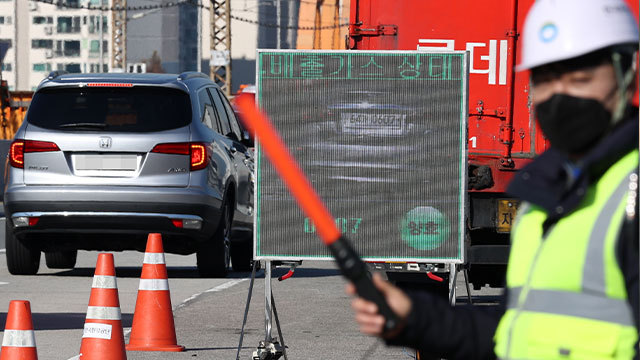 |
(Yonhap) |
To combat concerns about fine dust, especially during the winter, the city government of Seoul has toughened regulations on high-polluting vehicles and construction sites in the December-to-March period.
The Seoul Metropolitan Government first launched the winter season fine dust management program last year to lower the fine dust levels of the city during the winter, when they are usually at the highest.
This year, the city government implemented the program starting from Dec. 1 and it will run until March 31. The measure is designed to ease the intensity and frequency of fine dust through tougher regulations. The city aims to reduce 120 tons of fine dust emissions during the four months.
First of all, aging and high-polluting vehicles without devices to reduce emissions are restricted in the city from 6 a.m. to 9 p.m. on weekdays. These vehicles are classified as Emission Level 5. They account for only 10.6 percent of all vehicles in the country, but make up about 53 percent of fine dust emissions from the nation’s automobile sector.
This year, the Seoul Metropolitan Government has expanded the number of closed-circuit TVs at 100 key locations in the city and is cracking down on vehicles through an automatic license plate recognition system. When caught, drivers are notified by mobile phone within 15 minutes and also by mail within seven days.
Emergency vehicles, such as fire engines and ambulances, vehicles for the disabled and vehicles owned by low-income households are excluded from the restrictions.
Violators are charged a fine of 100,000 won ($91) per day. From Dec. 1 through Tuesday, 1.46 million vehicles violating the restrictions have been caught in the city, according to the Seoul Metropolitan Government.
Since 2018, when the restrictions on Emission Level 5 vehicles were fully implemented, a total of 148,895 of the most polluting cars have been equipped with emissions-reducing devices or lower pollution engines, the city said.
Seoul City will also strengthen its crackdown on industrial emissions from high-polluting industrial sites from January to March next year.
The Seoul Metropolitan Government plans to conduct rigorous inspections of around 4,000 sites, including 2,021 sites emitting a large amount of air pollutants and 2,019 sites generating a large amount of dust. The city considers them to be one of the major sources of fine dust in the city.
The government signed voluntary reduction agreements with a total of 42 polluting industrial sites. This encourages companies to set goals of reducing pollutants by up to 50 percent on their own by adjusting the operation rate.
The officials will also inspect construction sites to check whether they are equipped with washing facilities and dustproof walls. Aging construction machines will also be barred from construction sites by the city government. Drones will be used to inspect the sites where the access is difficult.
By Shin Ji-hye (
shinjh@heraldcorp.com)








